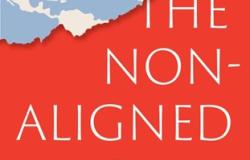Book Review - The Non-Aligned World: Striking Out in an Era of Great Power Competition

The Non-Aligned World: Striking Out in an Era of Great Power Competition by Jorge Heine, Carlos Fortin and Carlos Ominami. Cambridge: Polity Press 2025. 220 pp., £50 hardcover 978-1-5095-6434-7, £15.99 paperback 978-1-5095-6435-4, £11.99 e-book 978-1-5095-6436-1
This important book, staying firmly within the confines of orthodox approaches to international relations, albeit from a Latin American rather than a Northern standpoint, addresses the changing nature of global political and economic relations in an age of “chaotic polycrisis”. The authors offer what they term Active Non-Alignment (ANA) as a way forward for the countries of the Global South. They argue that even smaller and weaker states in the world system can utilise the core elements of ANA to maximise their leverage in a new bipolar world in which the United States competes with China for influence and power. What they mean by ANA is set out in both the Preface and the Conclusion, suggesting that, in the new era of Great Power competition, states can “hedge their bets” or “play the field”, refusing to ally with one or the other power tout court but, rather, judging each issue in terms of their own national interests. Only in the conclusion do we gain insight into what some of the core themes - the authors are loathe to call them “principles” - of ANA might be, namely: countering deglobalisation; reforming multilateral institutions; fighting climate change; prioritising development; and fostering equality.
 It might, indeed, have been better had these themes framed the book throughout because the relative lack of attention to them until the conclusion leaves the reader with the impression that what is being advocated here is a reworking of a kind of realpolitik in which national self-interest is the only “rational” choice for states in the Global South. The book sees ANA as a strategic or tactical choice, as both something to aspire to in the future as well as something that, at least in prefigurative form, already exists as countries and regions grapple with foreign policy choices in an age of uncertainty. One of the strengths of the book is that it takes the Russian invasion of Ukraine and the Israeli genocide against the Palestinians not as causes of a new North-South rift but as symptoms, with the countries of the Global South reacting against the hypocrisy of a supposed Rules-Based Order (RBO) in which the United States and NATO countries, in particular, interpret or manipulate the rules, including the defence of universal human rights, to suit their own interests. As the authors suggest, taking the two conflicts together illuminates the unfinished nature of a post-colonial narrative and, I would add, of global raciality, with Ukrainians seen as “European” and Palestinians as non-European “Others”. Hence, the countries of the Global South have opposed the genocide against the Palestinians whilst being more ambivalent, and variegated, in their responses to the aggression against the Ukraine.
It might, indeed, have been better had these themes framed the book throughout because the relative lack of attention to them until the conclusion leaves the reader with the impression that what is being advocated here is a reworking of a kind of realpolitik in which national self-interest is the only “rational” choice for states in the Global South. The book sees ANA as a strategic or tactical choice, as both something to aspire to in the future as well as something that, at least in prefigurative form, already exists as countries and regions grapple with foreign policy choices in an age of uncertainty. One of the strengths of the book is that it takes the Russian invasion of Ukraine and the Israeli genocide against the Palestinians not as causes of a new North-South rift but as symptoms, with the countries of the Global South reacting against the hypocrisy of a supposed Rules-Based Order (RBO) in which the United States and NATO countries, in particular, interpret or manipulate the rules, including the defence of universal human rights, to suit their own interests. As the authors suggest, taking the two conflicts together illuminates the unfinished nature of a post-colonial narrative and, I would add, of global raciality, with Ukrainians seen as “European” and Palestinians as non-European “Others”. Hence, the countries of the Global South have opposed the genocide against the Palestinians whilst being more ambivalent, and variegated, in their responses to the aggression against the Ukraine.
As a scholar of the “old” Non-Aligned Movement (NAM)[i], I found Chapter 3 on the historical origins of NAM fascinating, even if rather reliant on older texts and, therefore, not referencing more recent texts, of which there has been an exponential growth in the last ten years. The chapter, rightly, in my view, traces the origins of the original NAM in terms of the diplomacy of socialist Yugoslavia and its President Josip Broz Tito. Finding a close ally in Egyptian President Gamal Abdel Nasser and a more reluctant one in Indian Prime Minister Jawaharal Nehru and, later, President of Ghana Kwame Nkrumah and Indonesian President Sukarno, NAM defined itself not as a third bloc but, rather, in terms of a principled refusal to side either with the United States-led West or the Soviet-led East. The authors all too easily accept that NAM, with its first summit in Belgrade in 1961, was a direct product of the Bandung Afro-Asian conference in 1955, even though many authors have suggested that there were significant differences between the two and that, indeed, NAM thrived, particularly in the 1970s, precisely because the Bandung process had stalled.
More importantly, the authors seem to contrast their own preference for “active” non-alignment with the perception that the original NAM was somehow “passive” or “reactive”. I would argue, in fact, that NAM explicitly rejected “passive neutrality”, even whilst seeking alliances with neutral states in Europe, and very much sought to go beyond mere reaction to the politics of the superpowers. A key part of this was the role NAM, played in close alliance with the G-77 and, indeed, UNCTAD, in setting out the principles and policies of a New International Economic Order (NIEO), passed at a special UN General Assembly in May 1974[ii]. The authors are dismissive of the NIEO, seeing it as a form of “victim diplomacy” (p. 15), even though many of its prescriptions, notably on trade, on a new kind of developmentalism, and on the reform of the World Bank and the IMF, not only remain as relevant as ever today, but are also recognised, within the book, as important. At the same time, the authors are surely correct that there has been a tectonic shift in the balance of global economic power over the last fifty years, including the rise of China and other BRICS and BRICS+ countries. This is reflected in new investment banks and an attempt to move away from the US dollar as the only viable global currency. Hence the argument that, provided sufficient attention is given to ANA, these economic transformations should translate into shifts towards a multiplex political order in the not-too-distant future.
The book was completed before the second Trump term so that the implications of a new set of United States foreign policies, including trade policy, are not addressed. At the same time, the nature of Chinese foreign policy is, perhaps, in need of greater elaboration not least because I am far from convinced that China is really concerned with winning over “the hearts and minds” (p. 31) of international actors or nation states as is claimed. Nevertheless, the significance of Chinese infrastructure projects, including the Belt and Road Initiative, is clearly addressed and the implications for a different kind of developmentalism are set out clearly. The book is strong on addressing contemporary realities in Latin America and Asia – the importance of ASEAN is noted, for example – whilst rather limited in its focus on the African continent where, arguably, Chinese interventions are highly extractivist, hyper-exploitative, and neo-colonialist. Praise for Angola, as working closely with both the United States and China, in the conclusion, is, I think symptomatic of wider problems with the argument. Whilst the original NAM cannot, straightforwardly, be described as anti-capitalist, many of its member states were experimenting with forms of non-dogmatic socialism. In contrast, ANA seems to be underpinned by a capitalocentric logic, in which GDP growth is the only measure of progress, and the only path open for the Global South is to claim its rightful share of the global capitalist pie. In many ways, neither ASEAN nor the BRICS initiative, which commends “public-private partnerships”, promotes Special Economic Zones, encourages trade in hydrocarbons, continues to use offshore banking, and pays only lip service to commitments on the environment, come close to the kind of “moral” political force which Tito and the other founding statespersons of the old NAM envisioned. True lessons for a new NAM, perhaps, can be found more in forms of left regionalism, such as the “pink tide” in Latin America, than in the realist capitalocentric ANA advocated here.
Paul Stubbs is Emeritus Senior Research Fellow at The Institute of Economics, Zagreb, and Visiting Fellow at IWM, Vienna.
[i] Paul Stubbs (ed.) (2023) Socialist Yugoslavia and the Non-Aligned Movement: Social, Cultural, Political, and Economic Imaginaries Montreal: McGill-Queen's University Press.
[ii] Paul Stubbs (2026) The New International Economic Order: Lives and Afterlives, London: Routledge.


